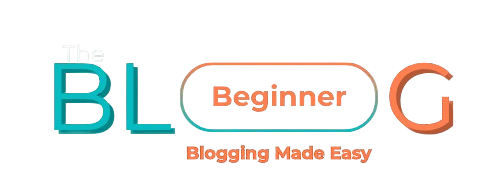SEO Basics for Beginners: How to Make Your Blog Discoverable on Google
Table of Contents
🧠 Introduction
So you’ve created amazing blog content…
But if no one can find it, what’s the point?
That’s where SEO (Search Engine Optimization) comes in — the art of helping your blog show up on Google when people search for topics you write about.
This guide breaks down SEO into simple, human-friendly steps — no tech jargon, no confusion.
Let’s get your blog discovered 💡
🧩 Step 1: Understand What SEO Really Means
SEO is how search engines like Google understand your content and decide whether to show it to people.
There are 3 main parts of SEO:
- On-Page SEO – What’s on your site (titles, keywords, content)
- Technical SEO – Site speed, mobile-friendliness, indexing
- Off-Page SEO – Backlinks and external authority
✅ As a beginner, focus on On-Page SEO first.
🔑 Step 2: Use the Right Keywords (But Don’t Stuff!)
A keyword is the phrase someone types into Google.
Example: “how to start a blog in 2025”
Where to Use It:
- Page title (H1)
- SEO title & meta description
- URL slug
- First paragraph
- 1–2 H2 headings
- Image alt text
- Naturally in the content (2–5 times)
💡 Use variations too: synonyms, related questions, long-tail phrases.
🏗️ Step 3: Structure Your Posts Properly
Google loves organized content — and so do humans.
Use Headings Wisely:
- Only one H1 per page (the post title)
- Use H2 for main sections
- Use H3 for sub-sections
- Break long paragraphs
- Use bullet points and lists
📌 Add a Table of Contents for long posts — readers and crawlers both love it.
🧠 Step 4: Write for Humans, Optimize for Google
Google’s goal is to give people the best possible result.
So write like you’re explaining to a friend — then tweak for SEO.
Keep It:
- Clear
- Honest
- Valuable
- Scannable
Avoid keyword stuffing or trying to “trick” the algorithm. It doesn’t work anymore.
🔗 Step 5: Add Internal & External Links
Links = context for Google and better UX for readers.
Internal Links:
- Link to related posts or pages on your own site
- Use natural anchor text like “learn more about blog setup”
External Links:
- Link to trusted sources (e.g., Moz, HubSpot, Google)
- Open in new tab
- Add
rel="nofollow"if it’s not a personal recommendation
🧠 More links = more clarity = better SEO.
🖼️ Step 6: Optimize Images for Speed & SEO
Do This:
- Use descriptive filenames (seo-basics-blog.webp)
- Add Alt Text using your focus keyword
- Compress images (ShortPixel / LiteSpeed)
- Use WebP format when possible
🚀 Images should help your SEO, not slow it down.
🧪 Step 7: Track & Improve
Set up:
- Google Search Console → To track clicks, keywords, indexing
- Google Analytics → To see which posts bring traffic
- Rank Math (plugin) → For on-page SEO feedback and optimization
Review:
- What posts are ranking?
- What keywords bring traffic?
- What needs updating?
📈 SEO is a process. Learn, test, and grow.
🔗 Internal Navigation
👉 Want to start with content? Read Content Creation Tips
👉 Need tools for research? Visit SEO Tools for Bloggers
👉 Not indexed yet? Go to Google Search Console Setup (Coming Soon)
💬 Final Words
SEO can feel intimidating at first…
But with small, consistent steps, it becomes your most powerful traffic source.
You don’t need to master everything at once.
Just focus on clarity, value, and smart structure — and the results will follow 💙
